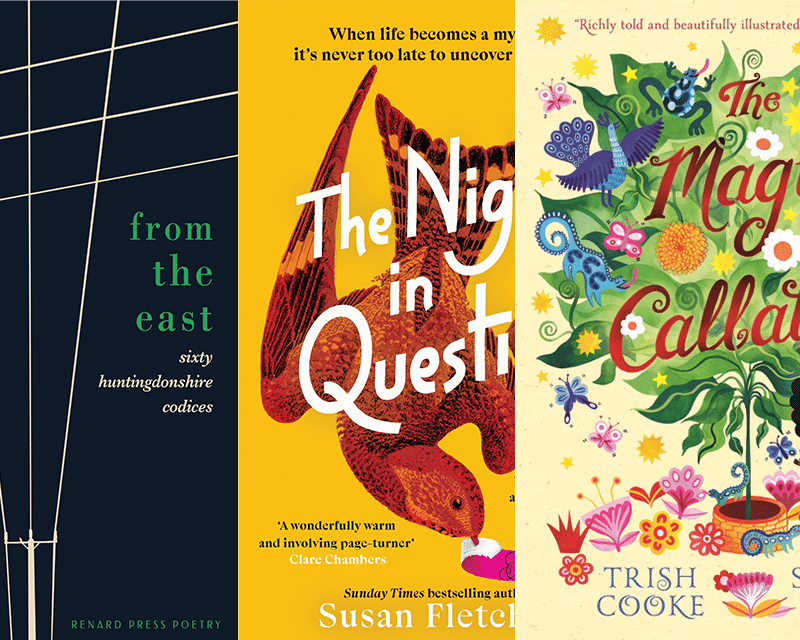- Collected
- Article
Stealing Characters
What happened to Rosalind?

- 7 November, 2016
- John Pilkington
‘Bid me farewell.’ Rosalind’s closing words, from As You Like It, have at times made me wonder what might happen to Shakespeare’s clever heroine after the curtain falls. Because every entrance or exit on stage, I learned as a student, is an exit from, or an entrance to, somewhere else. Does the end of the play have to mean the end of a character’s story — or might there be more to say?
Writers have long recognised the potential for giving new life to old characters, but their motivation isn’t always mere exploitation, for pragmatic or commercial reasons. I’m not concerned here with straightforward ‘continuations’ — the familiar phenomena of prequels and sequels, remakes and spinoffs. These are now found chiefly in the world of film, and sometimes in popular fiction, though the practice has a long history — take the candid prologue from Marlowe’s Tamburlaine the Great, Part Two (1587):
The general welcomes Tamburlaine received When he arrivèd last upon our stage Hath made our poet pen his second part…
And of course there is Shakespeare’s Sir John Falstaff, who had featured in Henry IV parts 1 and 2. As Nicholas Rowe recounts in his 1709 Life of Shakespeare, ‘Queen Elizabeth was so well pleased with that admirable character of Falstaff in the two parts of Henry IV, that she commanded him [Shakespeare] to continue it for one play more and shew him in love.’ After which the obliging playwright wrote The Merry Wives of Windsor, in which the roguish knight gets his comeuppance as thwarted seducer, to comic effect. Or so the story goes — but it remains a fact that The Merry Wives is very rare among Shakespeare’s plays in having no known source for its main plot.
What interests me far more than these and other continuations is the process of re-imagining existing characters. This also has a long tradition, dating back at least to the 17th century. John Fletcher’s The Woman’s Prize, or the Tamer Tamed was probably written around 1609–10, and revived in 1633 (after Fletcher’s death) for a court performance before Charles I. The play follows Petruchio, now a widower, as he remarries and finds the tables turned, his treatment at the hands of his new wife recalling his of Katherina in The Taming of the Shrew. (To highlight this reversal of fortune, The Shrew was performed around the same time). Such raw material has long provoked female writers into penning ‘responses’, as will be seen. But staying with chronology, we might leap a century and note John O’Keefe’s comedy Tony Lumpkin in Town (1778), which takes the rakish youth from Oliver Goldsmith’s success She Stoops to Conquer and puts him centre stage. At which point a new element comes into play: that of copyright.
Fletcher almost certainly wrote The Woman’s Prize while Shakespeare was still alive. But since the two men were friends and occasional collaborators, it seems unlikely that there was any serious falling-out over the matter: Shakespeare surely understood the writer’s struggle to make a living as well as anyone. In any case, there could have been no law suit alleging plagiarism: copyright didn’t exist, and the word ‘plagiarist’ then meant a kidnapper. By O’Keefe’s time, however, the first copyright act (of 1710) was on the statute books and She Stoops to Conquer was covered, Goldsmith having died in 1774. But then, he left no widow or dependents to object to the production. Judging by the later re-use of existing characters, all appear to have been taken from works safely out of copyright. Copyright, of course, does not cover characters or ideas, only text, although few authors have risked sailing close to that particular wind. And the abundance of out-of-copyright works still leaves rich pickings for the writer who wants to say something new, perhaps by challenging the world the original character inhabits.
The practice of reimagining, with a view to giving a new perspective, has to be more than simply a lazy option: filching characters created and developed by someone else. Admittedly, some re-workings might fall into the slightly frivolous category, notably in the field of musicals such as Irene and Louis Kamp’s Mister Quilp (1975), loosely based on The Old Curiosity Shop but allowing Dickens’s villain to steal the limelight. Other offerings, by contrast, have achieved merit in their own right. I once saw a good student play called Lady Dedlock’s Secret, which took a plot element from Bleak House – Lady Dedlock’s illegitimate child – and made it into a sympathetic portrait of a woman confined by the strictures of her time.
In fact reimagining characters as a response, or even a rebuke, is generally a phenomenon of the 20th and 21st centuries — and it may be no accident that the emergence of many such works coincides with the rise of feminism. Guillaume Apollinaire’s The Breasts of Tiresias, which was first perfomed in 1917, provides a striking, early case study. The surrealistic play lifts the soothsayer character out of Sophocles’ tragedy Oedipus Rex and runs with the idea, portraying a married woman, Thérèse, who changes sex and becomes a powerful politician as a result (during the transformation, her breasts become detached and float away like bubbles). An early investigation into sexual identity and politics, the work influenced, among others, Virginia Woolf with Orlando (1928).
In a rather different vein, Jean Rhys wrote the highly regarded novel Wide Sargasso Sea (1966) as a response to Charlotte Brontë’s portrayal of Rochester’s wife in Jane Eyre. A prequel, long before that unsatisfactory word came into use, it tells the story of the young Antoinette Cosway in Jamaica before her marriage to an unnamed English gentleman, and before she became ‘Bertha’. In angrier mode, Elaine Feinstein’s Lear’s Daughters was a feminist riposte to Shakespeare’s self-centred old patriarch. Performed by the Women’s Theatre Group in 1987, it is part of a body of such work, including for example Lisa Klein’s take on Hamlet with her novel Ophelia (2006), or The Real Lady Macbeth, which premiered at the Edinburgh Fringe in 1982.
That last play was written by Stuart Delves, which reminds us that male writers too have found inspiration among the classics — and reasons to challenge them: they have played with the question ‘what if…?’ Witness, in recent times, John Updike’s novel Gertrude and Claudius (2000) or Jon Clinch’s Finn (2007), both of which offer what we now call ‘back-stories’ to existing characters. Updike explores an ‘eternal triangle’ (Gertrude, her then-husband ‘old Hamlet’ and her lover Claudius), while Clinch takes Huck’s alcoholic father from Mark Twain’s The Adventures of Huckleberry Finn and gives us a more rounded picture of the man. Brian Friel’s Afterplay (2002) chooses two characters from Chekhov, Andrey from The Three Sisters and Sonya from Uncle Vanya, places them together after the events of the original plays and gives them their own story. While Tom Stoppard had already been drawn to existing stage figures when he wrote Rosencrantz and Guildenstern are Dead (1966), about what might have happened to those under-developed characters off-stage during Hamlet (with bits of the play itself ‘borrowed’ to boot). Far from being continuations, such established works have provided springboards for later writers to present their own arguments — notably, for example, Edward Bond’s Lear (1971) which is almost a complete rewrite of Shakespeare’s play, told from Bond’s socialist perspective.
As with Chekhov’s and Shakespeare’s plays, any works free from copyright (and any characters that have not been trademarked by shrewd authors or their agents) are fair game. In today’s litigious times, however, when rock stars can be sued for allegedly re-using a chord sequence from someone else’s song, the climate is very different. There’s an old adage in the music world: ‘Where there’s a hit, there’s a writ’, which some successful authors of block-busting novels have also found to be true. Now, the prospect of even attempting to appropriate someone else’s characters might amount to professional suicide. Re-workings of Sherlock Holmes may be possible, Conan Doyle having died in 1930, but those who continue to exploit James Bond do so only with the approval of Ian Fleming’s estate, the process no doubt checked out thoroughly by lawyers.
It’s clear that the idea of doing something new and interesting with an existing character from fiction has occurred to many writers. It certainly did to me, when in the 1990s I proposed a radio play (sadly, never commissioned) about Mistress Quickly, the larger-than-life hostess from the comic sub-plots of several Shakespeare histories. I thought she deserved her own play, and I still do. It struck me that her jolly – if at times waspish – innkeeper persona could be just that: an act for the customers. How might she behave when the last drunk has staggered homewards and she can put aside the mask?
As for Rosalind: I’m not aware of any later author’s writing a sequel to As You Like It. Perhaps we can assume that she lives on happily married to Orlando, in which case there may be little to add. But then again, there’s always the question, ‘what if…?’
You might also like:
No facts, only versions
Memoirs are as much about what is excluded as what is included. This edition examines how you can evoke the…
RLF Fellows’ News: April 2024
Publishing News RLF Fellow Trish Cooke’s new children’s book, The Magic Callaloo, is set to be published by Walker Books…
Susan Fletcher on outsiders in fiction – literal and imagined
I’ve always known that I’ve preferred to be outside. To be an outsider – literally, and, specifically, amongst wild places…


